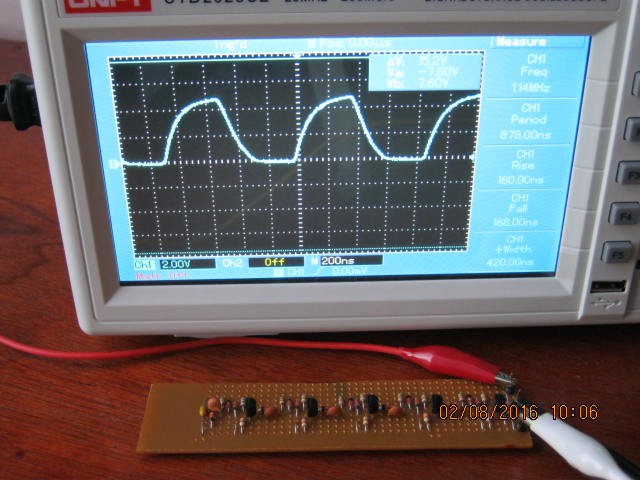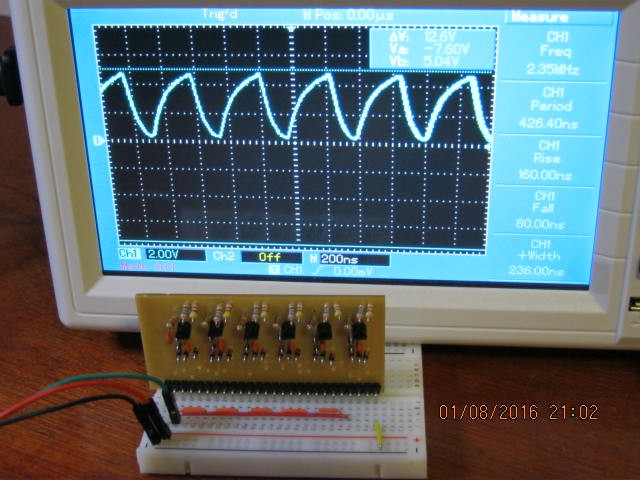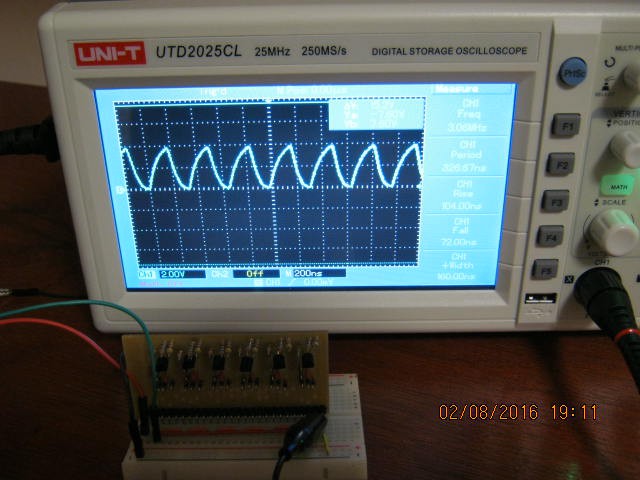BC548B 5 Stage Ring Oscillator
I dug up my old BC548B 5 stage ring oscillator just to compare with the 2N3904 version:
The 2N3904 is faster but there is something else is going on?
I decided to increased the base drain resistor from 1k2 ohm to 1k5 ohm. The wave form is now both more symmetrical and faster (3 MHz or 33 ns propagation delay). Now increasing the base drain resistor turns on the transistor a little more when off so the output high voltage is now only about 4 volts (previously about 4.8 volts). This tells me I have pushed this configuration as far as I can without changing the bias feed resistor, the collector resistor or the supply voltage (to stay TTL compatible I don't want to change them):
How good is this simple circuit? A 7400 (TTL) has a nominal propagation delay of 10 ns.
AlanX
 agp.cooper
agp.cooper


Discussions
Become a Hackaday.io Member
Create an account to leave a comment. Already have an account? Log In.
I ran into some quite stupid results when using a simulator so practical tests are absolutely necessary. As I found with this series of tests I am being limited by slew rate. I have updated my post with after increasing the base drain resistance from 1k2 to 1k5 ohms. The signal is now more symmetrical and faster (3 Mhz and 33 ns propagation delay).
I am staying with 7400 TTL compatibility so I cannot take advantage of using a lower Vcc or lower resistance values overall.
What I have not stated is that I also want the noise margin that my circuit provides. It is pretty scary looking at the noise on the bus of my Weird CPU!
Check out Johnny's webpage:
http://lovqvist.net/DTL/NOT.html
He has done a lot of work in this area. His design gets 6 MHz compared to my 3 MHz but at the cost of noise immunity.
Regards AlanX
Are you sure? yes | no
BTW 2N3904 can be quite fast. I have used it as voltage follower here:
https://hackaday.io/project/9992-low-cost-vga-terminal-module/log/33135-discrete-video-buffer
Are you sure? yes | no